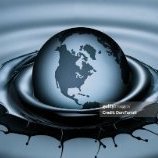Japan: Radioactive water leaks from Fukushima nuclear plant
-
Recently Browsing 0 members
- No registered users viewing this page.
-
Topics
-
-
Popular Contributors
-
-
Latest posts...
-
10,159
Electric Vehicles in Thailand
Right ✅️, this is only about Chinese submarines, I mean EVs.....or both? AQPENGJW8qASQwaL6i2YZfCXiyBFvtW4lmPnrml4D_OlFfpqmztsdOYashOvAchNxO8AvBoeVQGVO_IW0HCs4Ngd3KDh84EKRr463SSwFH6KHQ.mp4 -
-
76
‘It doesn’t matter now if they are children’
Israel have lost their right to have a sovereign country, they are land grabbing scumbags, who think they are the Master Race and over half of them agree to the total destruction of Gaza. Look at what they're doing in the West Bank. Genocide in Gaza.- 1
-

-
75
-
0
Civil Judgment Against Trump Reversed
10:40 am Eastern Time reported on Fox, the Judgement against Trump has been reversed. I wanted to be the first one to wave goodbye to a whole bunch of folks. Winning. -
723
The alarming mental decline of Donald J. Trump -- watch this space
You have been conned on everyone one of those.
-
-
Popular in The Pub

.thumb.jpg.3ee24d9400fb02605ea21bc13b1bf901.jpg)








Recommended Posts
Create an account or sign in to comment
You need to be a member in order to leave a comment
Create an account
Sign up for a new account in our community. It's easy!
Register a new accountSign in
Already have an account? Sign in here.
Sign In Now